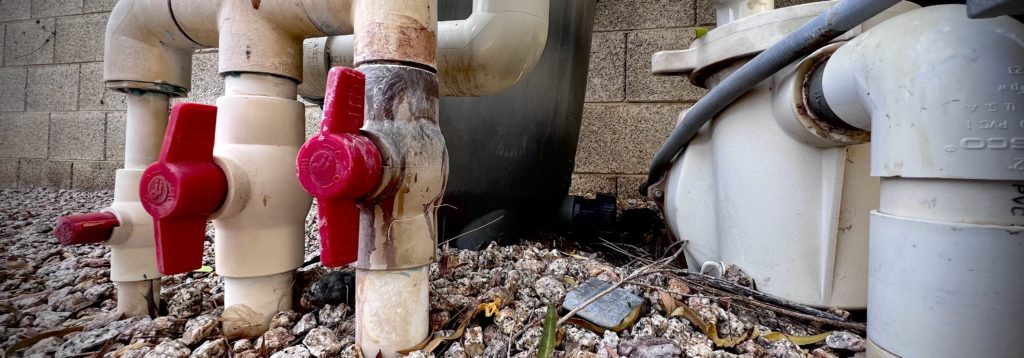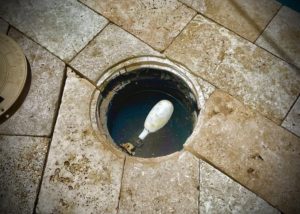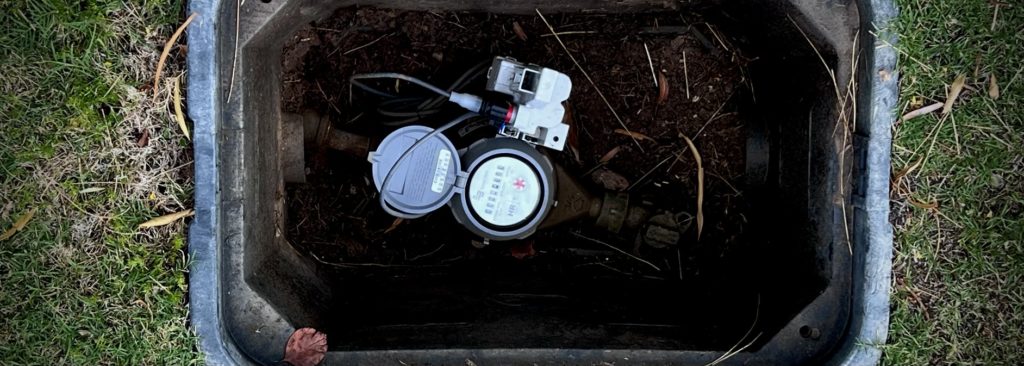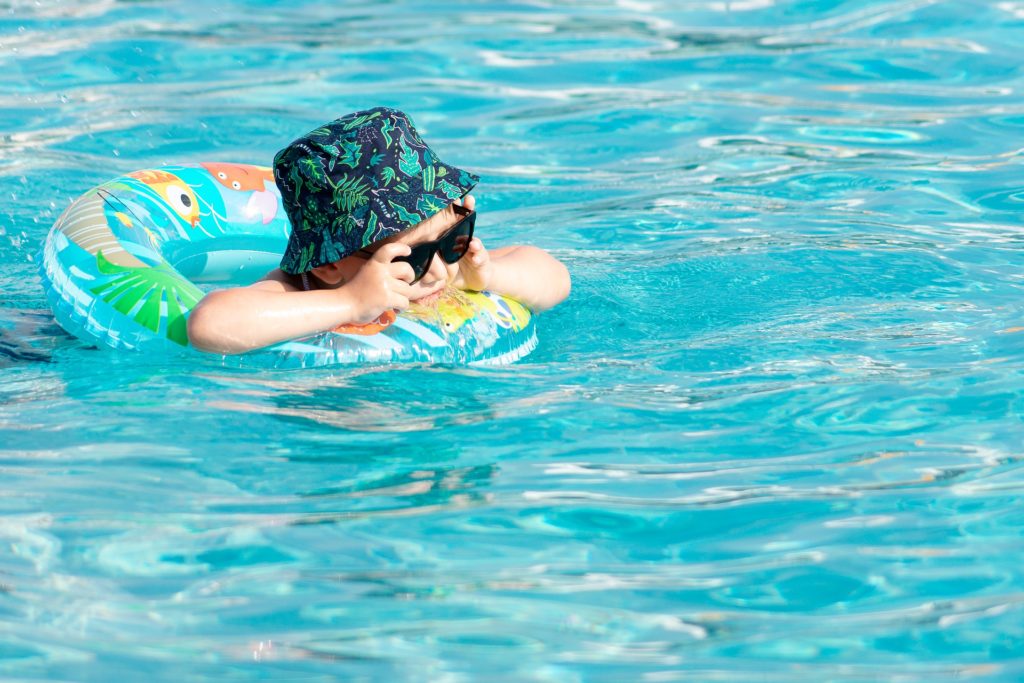Swimming pools help us beat the heat, but occasionally we may need to beat the leak!
Pools can leak constantly or may only leak when the pool equipment is running – which can lead to water waste and a high water bill. Since pools are one of the greatest users outdoors, it’s important to make sure they are being operated as efficiently as possible.
Leaks in your pool system may be difficult to find, even if you have used your meter to check for leaks. This may be an issue for one of two reasons. If you have an autofill device, then it will continue to keep the pool’s water level the same by adding water on a more frequent intermittent basis. If you don’t have an autofill device and you fill the pool yourself with a hose, then you may not notice that you are adding water on a more frequent basis. You may just think the water is needed due to evaporation.
1.) Look for visible leaks.
Most leaks associated with the pool are found on the pool equipment. You should periodically turn on the pool equipment and look for visible leaks. White, crusty mineral deposits on pipes could indicate a slow leak. Check for wet spots on the ground around the pool, pool equipment, and between the equipment and the pool.

2.) Do a bucket test to see if there are non-visible leaks.
The bucket test is simple. You’ll need a bucket and a wax pen. Also, stop manually adding water to the pool or turn off the water to the pool’s autofill until the test is complete. You can read the instructions below or watch our Water – Use It Wisely partner video from SRP: Identifying a Pool Leak.

If you have an autofill, then turn off its water supply.
Find the pool’s backflow device which is usually located at the back or the side of the house. The pool’s water supply line is usually the first line out of the pool’s backflow. Turn its shut-off valve to the off position.
Place a bucket or container on a pool step without submerging it.
Fill the bucket with water so it is the same level with the pool water. Use a wax marker to mark the level of the water in the pool and the level of water in the bucket. Do not splash water out of the pool during the bucket test.
Wait a minimum of two to three days to let natural evaporation occur.
(Keep in mind, if it rains or if it’s windy, you may have to redo the test.) Has the water level in the pool dropped more than the level in the bucket? If so, you have a leak. However, if both the levels go down but are the same in the pool and in the bucket, then you do not have a leak.

“What is an autofill?” It is a device that fills your pool with water automatically. Autofills are typically located next to the pool inside a recessed container beneath a round lid.
What to do if you’ve identified a leak.
Now that you’ve identified a leak, you can do more testing to indicate whether the leak is in the pool structure or the plumbing system. Repeat the test with the pool equipment running. Repeat the test with the pool equipment manually turned off so it can’t run. If the tests reveal that more water was lost with the pool equipment running, the pool’s plumbing is probably the cause.
3.) Use your meter to check for leaks.
If you have a high water bill and you’re unsure if it’s the pool or something else on your property, start your search by using your water meter as a leak detection device. Watch our How to Read Your Meter video! Follow instructions in the Find and Fix Leaks guide to determine if you have a leak. The guide also shows you how to determine the location of the leak.

Note: If you live in Phoenix, your meter reads in cubic feet. One cubic foot equals 0.748 gallons. If you determined that 100 cubic feet were used during a meter test, then 74.8 gallons were used. All you must do is multiply the cubic feet by 0.748.
Find our other pages and blogs on the topic:
- Learn more about how to care for your pool on our Water – Use It Wisely Swimming Pool resource page.
- Saving Water in Swimming Pools: 5 Ways to Cut Evaporation
- Saving Water in Swimming Pools: 5 Ways to Cut Pool Water Loss
- How to Reduce Chemical Use in Your Pool


